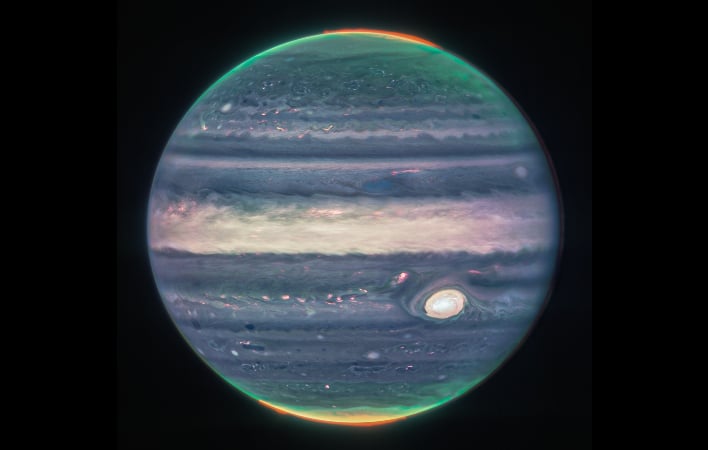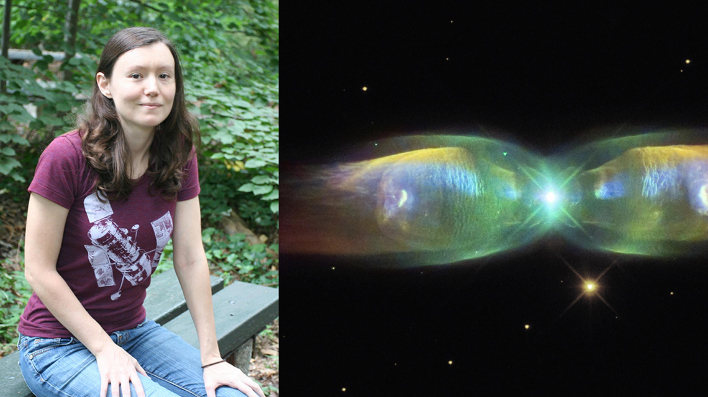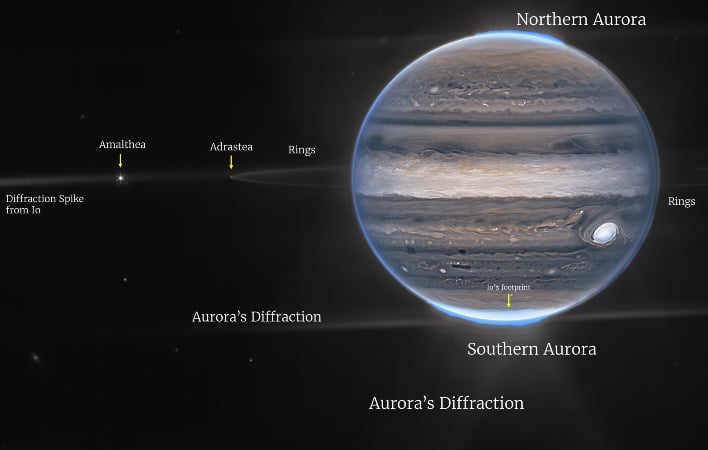NASA's Webb Space Telescope Captures Jupiter's Beautiful Auroras In Stunning Detail
Jupiter is not lacking in activity, as mammoth storms, powerful winds, auroras and extreme temperature and pressure conditions are the norm. Two recent images of the planet, taken from JWST's Near-Infrared Camera (NIRCam), map light that is invisible to the human eye in incredible detail. Scientists joined up with citizen scientist Judy Schmidt in order to translate the Webb data into images.

The captured auroras, which extend above the northern and southern poles of Jupiter, were created using a composite of several images from Webb. Utilizing a filter that is mapped to redder colors, the aurora's shine can be seen. Another filter, that was mapped to yellows and greens, highlights the hazes that swirl around the two poles. A third filter, mapped to blues, enhances the light that is reflected from a deeper main cloud.
Heidi Hammel, Webb Interdisciplinary Scientist for Solar System Observations and Vice President for Science at AURA, explained, "The brightness here indicates high altitude - so the Great Red Spot has high-altitude hazes, as does the equatorial region." She added, "The numerous bright white 'spots' and 'streaks' are likely very high-altitude cloud tops of condensed convective storms."
The wider view image shows the collective Jupiter system program, as it gives a view of the dynamics and chemistry of Jupiter itself, its rings, and its satellite system, according to Thierry Fouchet, a professor at the Paris Observatory.
Images from Webb do not come back looking like those shown here. The raw data must be unpacked, processed and translated into the final images shown to the public. Enter Judy Schmidt, a longtime image processor in the citizens science community. Schmidt is responsible for the latest images, along with Ricardo Hueso, a co-investigator on these observations.

Schmidt's guiding philosophy is: "I try to get it to look natural, even if it's not anything close to what your eye can see." That philosophy is working out well, as the images of Jupiter caught the attention of professional scientists.



